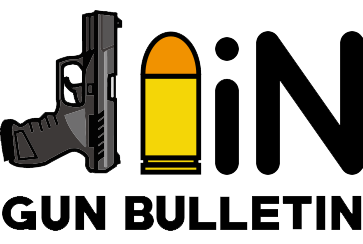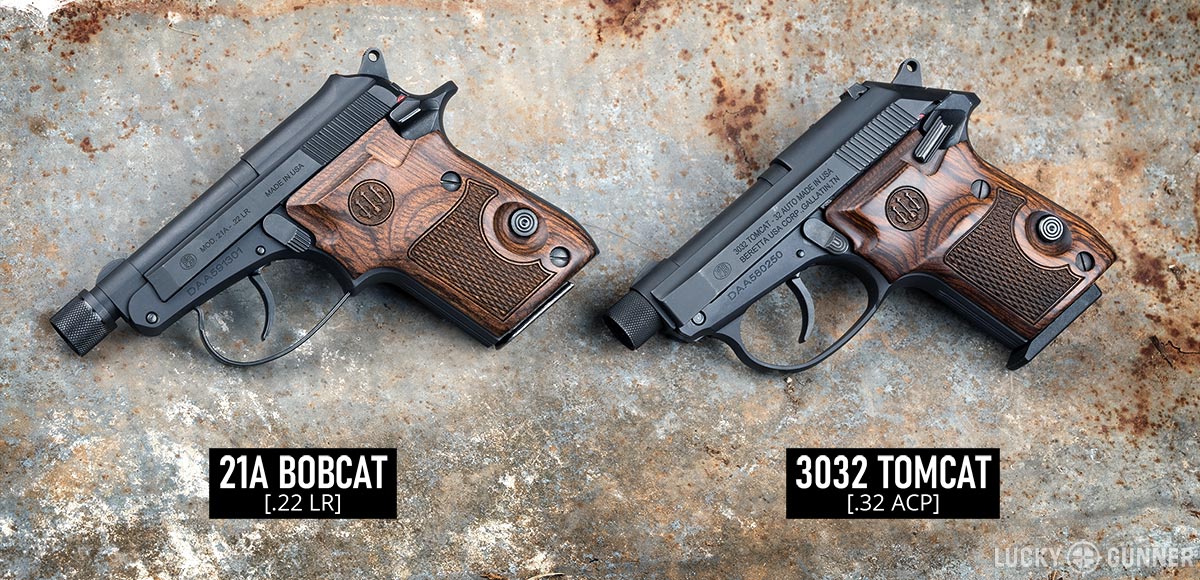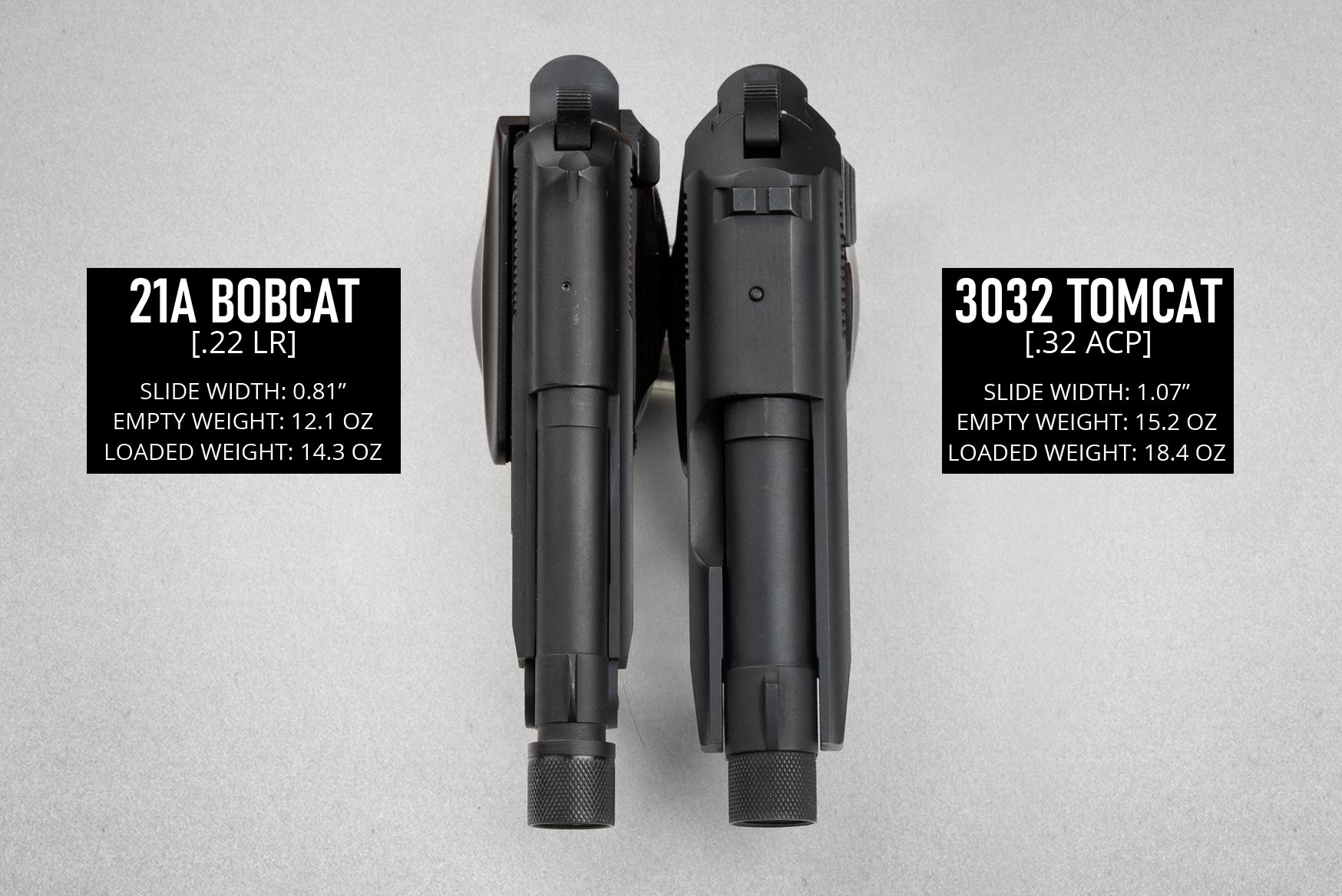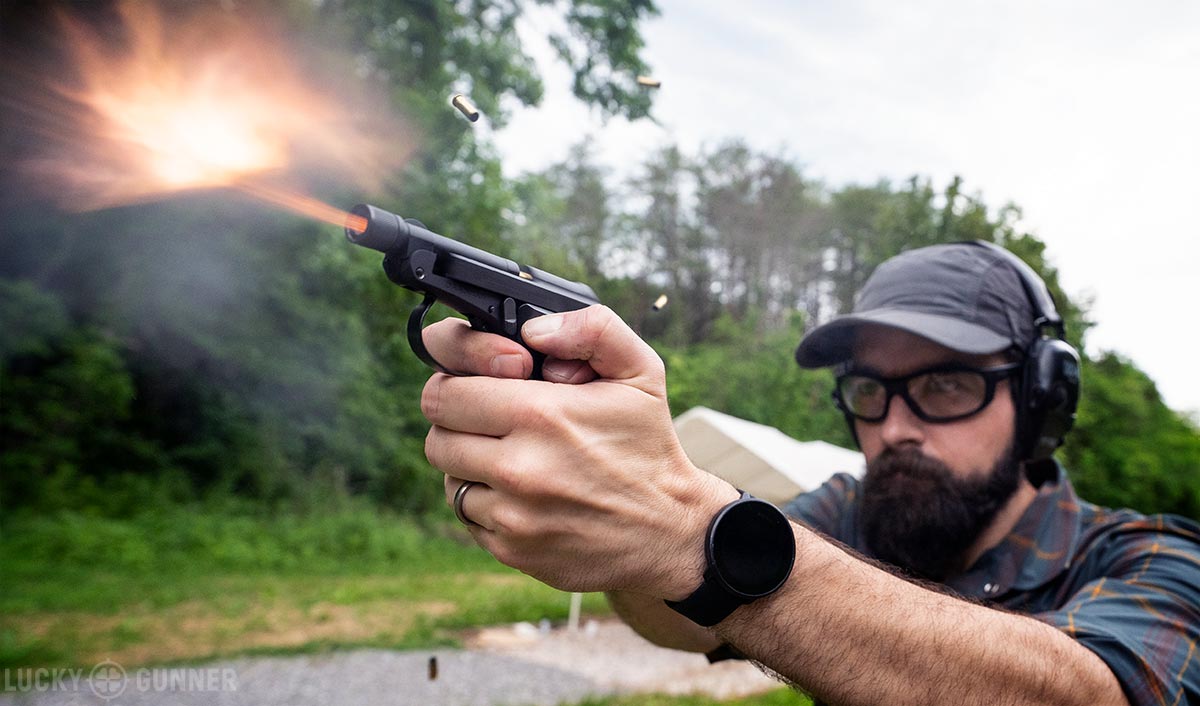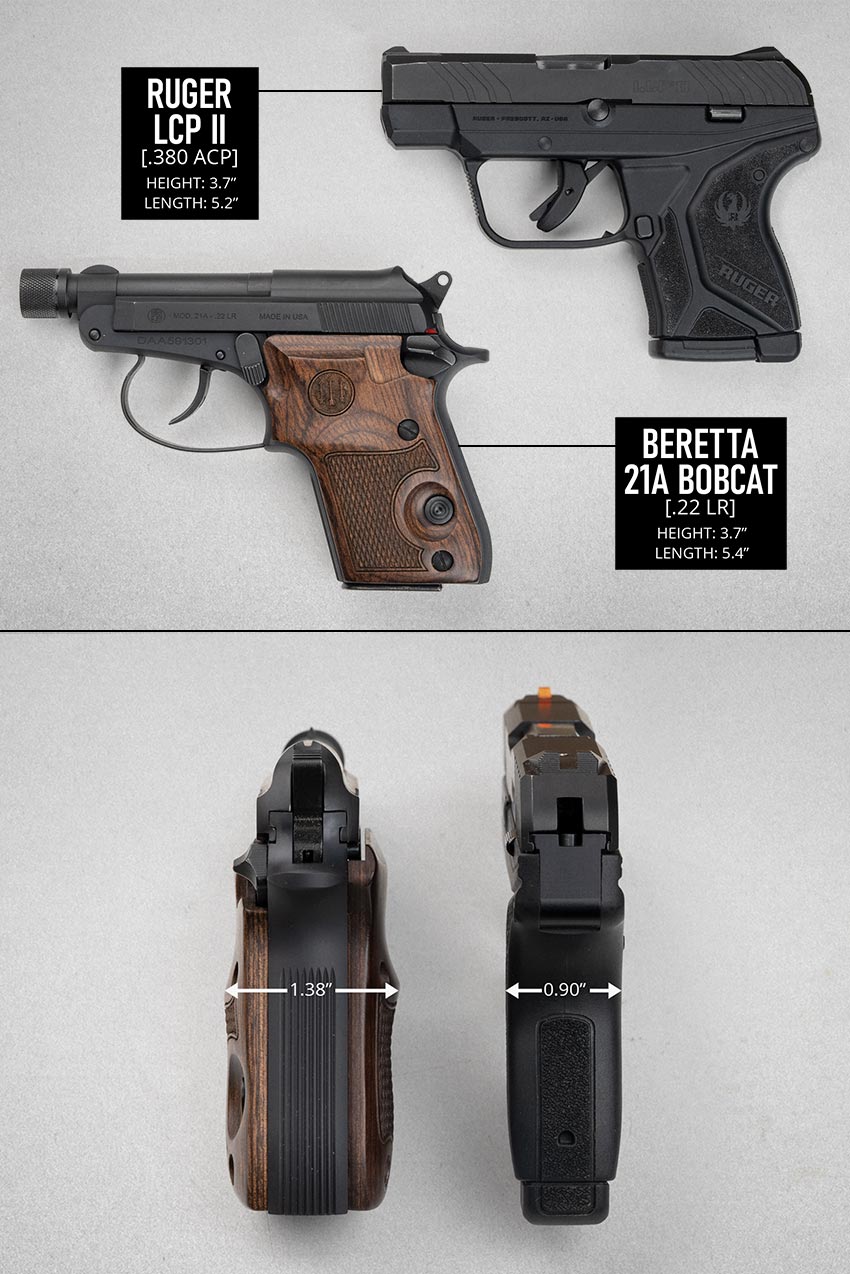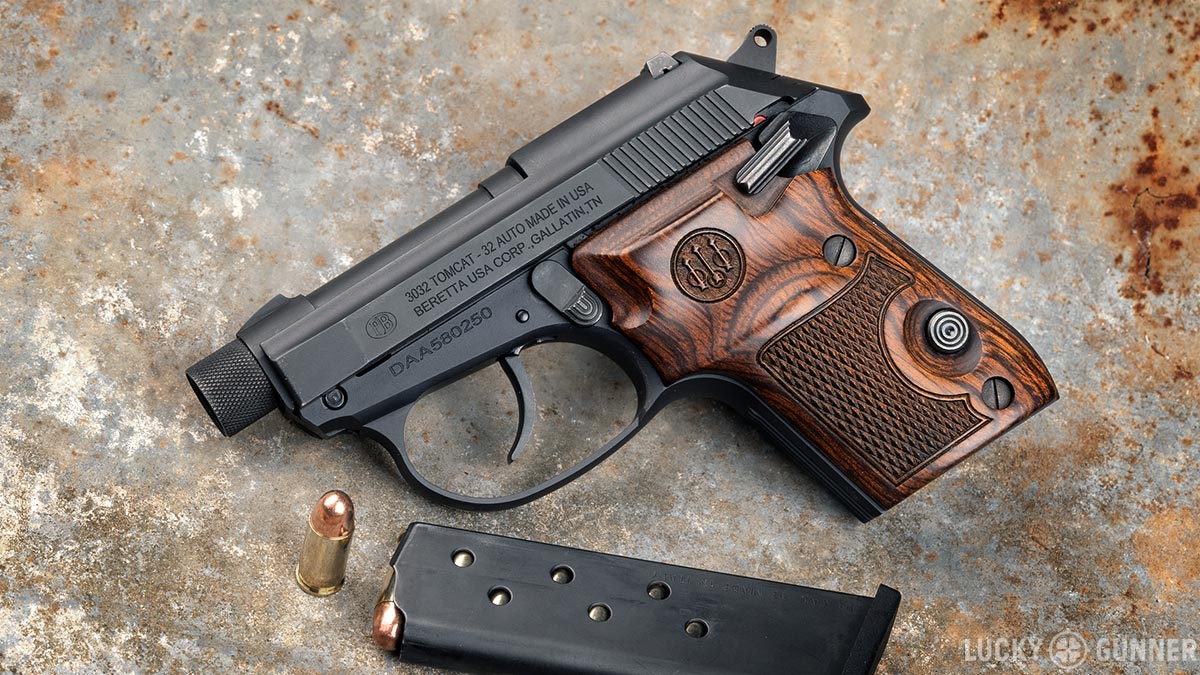The Beretta 21A Bobcat and 3032 Tomcat are relics from a time when even pocket pistols had hammers and were made from steel and wood. But Beretta is still producing them today, including the threaded barrel Covert variants that we’re reviewing today. Are they just good for range toys, or do they have anything to offer as serious self-defense tools when compared to more modern options?
Details in the video below, or keep scrolling to read the full transcript.
Hey everybody, I am Chris Baker from LuckyGunner.com. Today I want to talk about a pair of pocket pistols from Beretta – the Model 21A Bobcat and the Model 3032 Tomcat. These are not new designs, but in 2020, Beretta released threaded barrel variants that they call the Covert models and that’s what we’re looking at today.
I’m going to be referring to these and similar-sized guns as “pocket pistols.” That doesn’t mean they have to be carried in a pocket or that I even recommend that method of carry. Pocket pistol is just an informal classification we use to refer to the smallest of the small concealable semi-autos.
At first glance, these two Berettas look basically identical. The 21A Bobcat is chambered for .22 LR, and until fairly recently it also came in .25 ACP. The 3032 Tomcat fires .32 ACP, and it’s a bit chunkier than the Bobcat. The grip and the frame are the same size, but the Tomcat has a thicker slide and it’s four ounces heavier when fully loaded.
I’m reviewing both of these guns, but most of the range footage you’re going to see is with the 21A Bobcat. And I’ll admit right up front that’s because I like the Bobcat a lot better. Shooting .22 is just more fun. Suppressed .22 with a rimfire can is a lot quieter than suppressed .32 with a 9mm can. If I had to choose one of these two guns to carry, I’d probably pick the Bobcat. The Tomcat is just a little heavier than I want a pocket-sized gun to be.
Otherwise, they are very similar. Both guns are double action/single action with a frame-mounted manual safety and a 7+1 ammo capacity. Neither have a slide lock on the last round. Both models feature the Beretta signature tip-up barrel. Instead of racking the slide to chamber your first round, you can press forward on the barrel release. The barrel then pops up so you can load your first round manually into the chamber. Then close it up and it’s ready to fire.
The tip-up barrel design goes back to 1952 with the Beretta 950. The Bobcat came along in 1984 followed by the Tomcat 1996. There have been some minor changes over the years. The current Tomcat’s slide is wider than the original to prevent some issues they had with the frames cracking. The threaded barrel option is new. But for the most part, these guns are not much different than when they debuted in the 80s and 90s.
Range Toys or Serious Carry Guns?
So why am I talking about these pocket pistols that are decades old? More importantly, why is Beretta still bothering to make them? The Ruger LCP is the golden standard by which all other modern pocket pistols are measured. By comparison, these Berettas are heavy and thick. They’re chambered for weaker cartridges when conventional wisdom dictates that .380 ACP is the minimum acceptable caliber for self-defense. A cynical person might even say that these new threaded barrel models are just a desperate attempt to milk the last remaining dollars out of some old guns that are otherwise completely irrelevant.
There might be some truth to those objections. But I think the appeal of these little Berettas is clear if you just go to the range and shoot one of them and then shoot a .380 LCP or some other tiny pocket .380. There’s a pretty stark difference. Unlike the .380s, the Berettas are actually enjoyable to shoot. They recoil a lot less and they have more grip surface area to hang on to. If you can get past the first double action shot, the single action trigger beats the pants off any other pocket pistol trigger.
Beretta is one of very few companies still making pocket-sized pistols in any caliber other than .380 (unless you also want to include some of the smallest of the 9mms). If you followed our Pocket Pistol Series a couple of years ago, you know that I think .22s and .32s are vastly underrated for this class of pistol.
We all experience some decrease in shooting performance when we go from a full-size or compact to a pocket pistol. If we insist on 9mm or .380 for our pocket pistol, that doesn’t cancel out the skill decrease. In fact, it usually makes it worse. Getting the holes where they’re supposed to go on target is a lot more important than what size the holes are, and that’s why I like small calibers for small guns.
Grip Width: A Two-Sided Coin
The Tomcat and Bobcat also offer a potential solution to the problem of accessibility. That’s actually one of the biggest shortcomings of pocket pistols. Because of the small grips and the carry methods we often use for these guns, the drawstroke can be very slow and awkward. Under pressure, it’s common to see people end up with a weird grip that induces malfunctions or drops magazines.
Depending on the size of your hands, the wider grips of the Berettas might help mitigate those issues. In terms of length and height, they are roughly the same as the Ruger LCP. With the wood grip panels that come standard on the Covert models, the Beretta’s grip is almost half an inch thicker than the LCP’s.
Personally, I prefer the thinner plastic grip panels Beretta ships with the standard version of these pistols. I put a set of those on the 21A and that’s what I used for most of the range testing I did with that gun. They don’t look as sharp as the wood grips, but they fit my hands a little better.
Even with the thicker grip panels, I do have to modify my grip technique slightly when shooting either of the Berettas. Instead of a normal “thumbs forward” grip like I would usually use on a semi-auto, I tuck my thumbs in, which is more like the grip I use with revolvers. This helps prevent slide bite on my right thumb, and keeps my left thumb from contacting the slide and inducing malfunctions.
The mag release is located in an unusual place, recessed here in the middle of the left grip panel. It’s not ideal for a rapid reload, but for most people, it’s probably better protected from being pressed accidentally.
Other Features
I love the tip-up barrel feature on these guns. It’s unique and it’s fun to play with. But I don’t think it’s as helpful as it could be. The purpose was to offer an alternative for people who have trouble racking the slide. The problem is, if you can’t rack the slide, you might also have trouble with the double action trigger pull. It’s not a bad trigger, but that first shot is on the heavy side at around 12 pounds. Carrying in single action mode with the hammer cocked is not really a safe alternative with these pistols. The safety only blocks the trigger itself, it does not block the firing pin or the hammer. It’s not drop safe with the hammer cocked. It’s safer to carry it with the hammer completely down (not at half-cock) and the safety on or off.
There’s no decocker, so you have to do that manually. Fortunately, the trigger will release the hammer when the barrel is tipped up. So you never have to lower the hammer on a loaded chamber.
That’s all fairly straightforward if you’re already familiar with double action pistols. For a newer shooter, all of that makes for a complicated manual of arms that’s tough to remember. So despite the softer recoil and the tip-up barrel, I think the Bobcat and the Tomcat have a lot more appeal for enthusiasts rather than novice shooters.
21A Bobcat and 3032 Tomcat Reliability
Reliability is always a big question with pocket pistols. I mentioned the slide cracking issue with the early Tomcats, but I think that’s mostly taken care of. Once I figured out how to grip this Tomcat, I haven’t had any malfunctions. But I’ve only got about 250 rounds through it.
I put in a lot more trigger time with the Bobcat. Historically, reliability has been very hit or miss with these, but I’ve heard much better reports about the newer models. My range time with this Covert Bobcat has confirmed that. It is picky about ammo, but it will let you know within one or two magazines whether it likes a particular load. If it runs those first couple of mags, it will probably keep running. This one seems to like jacketed round nose ammo the best. It cycles really well with CCI Clean Subsonic and CCI Mini-Mags. Between those two loads, I ran about 600 rounds through the gun suppressed and unsuppressed with just a single failure to eject. It also seems to run better if you clean the feed ramp every 200 rounds or so.
Sights
Like I mentioned earlier, Beretta has not made many changes to these pistols since they launched, and that includes the lousy sights. The Tomcat’s sights are small and hard to see. The Bobcat’s sights are even worse and not adjustable. That’s extra frustrating because even at seven yards, this Bobcat hits a couple of inches low and to the right.
The Tomcat’s sights were at least properly regulated. I tried a few rounds on a steel target at 55 yards. I managed to hit it seven out of eight times. So, if you have the luxury of time, there’s no reason the gun can’t be accurate. If you’re in any kind of hurry, you’ll have to settle for a rough slide index for your aiming reference.
When the Covert Berettas were first announced, I got all excited because I thought a Bobcat with a suppressor and Crimson Trace Lasergrips would be perfect as a minimalist pest control setup. But then it turns out Crimson Trace already discontinued the model they made for these guns and they are pretty much impossible to find.
Back in the mid-2000s, Beretta offered a Tomcat variant called the Alley Cat with an XS dot front sight in place of the tiny integral blade front sight. I’d love to see Beretta bring this back and add a variant for the Bobcat as well.
For now, aside from just painting the front sight, I’m not aware of any way to improve the sights on these pistols. That makes them both a lot less fun and less useful than they otherwise could be.
Alternative .32 ACP and .22LR Pocket Pistols
For a .32 ACP for concealed carry, I personally prefer the Keltec P32 over the Tomcat. That’s probably the only case where I’d choose a Keltec over a Beretta. The P32 is not nearly as interesting as the Tomcat, but it’s half a pound lighter and I just happen to shoot it a lot better than the Tomcat. If you have large hands or if you don’t have much time with double action only triggers, there’s a good chance you’ll shoot the Tomcat better.
For a pocket-sized rimfire pistol, the only other option besides the Bobcat that’s worth considering is the .22 version of the Ruger LCP II. That’s another gun that seems pretty hit or miss in terms of reliability. The one we reviewed a while back is really bad about light primer strikes. Like the P32, the LCP is also not nearly as interesting or classy as the Beretta.
But it’s got some other things going for it. You get ten round mags instead of just seven. Ruger makes a drop-in threaded barrel for it. And Crimson Trace and Viridian both make laser sights for the LCP, so you can actually hit stuff with it when you’re running it suppressed. If you just want a tiny, fun, suppressor host, I still think the Bobcat is probably the way to go. For anything more practical, it’s kind of a toss-up between the two.
Okay guys, that’s all I’ve got to say for now about the pocket Berettas. If you found that helpful, be sure to buy some ammo from us with lightning fast shipping at LuckyGunner.com.
The post Beretta Covert Pocket Classics: The 21A Bobcat and 3032 Tomcat appeared first on Lucky Gunner Lounge.
